September’s Labors & Feasts
Here in the U.S., Labor Day weekend is the perceived marker between summer and fall. The holiday is celebrated on the first Monday of September, commemorating one of the largest labor union marches of the Gilded Age. I guess legislators of the 1890’s were a decisive lot, as it took only two years for Congress to declare it a national holiday🤭. The laborers for whom the holiday is named worked long hours in grueling factory conditions. It’s a day that ought to remind us of our industrial past, even though it’s now white collar office workers who are most likely to have it as a paid day off, extending the standard 2-day weekend.
Ideally, U.S. workers who do labor on Labor Day get holiday pay. Of course, there are many Americans who must work that day regardless, including farmers. In the agrarian calendar, Labor Day falls during harvest season. This busy season known to our ancestors did not allow for rest, until the harvest was brought in and winter preparations made; only then did they celebrate. Michaelmas (pronounced “Mickle-muss”), which falls on September 29th, was one of the most widely celebrated harvest feasts in the British Isles, and you can read about our family’s celebration of it here.
In early modern Britain, the last sheaf was brought in on a festively decorated cart, which the farm laborers followed to a “harvest-home” banquet.1 The ending scenes of the lesser-known and far better of the 2 Emma adaptations of 1996, with Kate Beckinsale in the lead role rather than Gwyneth Paltrow, centers around a harvest-home feast held by Mr. Knightley for his tenants. The snobbish Mr. & Mrs. Elton are horrified on finding they are expected to dine with the families who farm the estate, whilst Austen’s most uppity heroine learns to respect those below her social class. The inclusion of this harvest festival is a welcome use of poetic license, which is a tricky thing to achieve in filming the movie version of any classic or well-known novel. The script is by Andrew Davies, who also dramatized the 1995 Pride and Prejudice mini-series of Colin-Firth-diving-in-a-pond fame. This version of Emma, which, unlike the other released in ‘96, is free of Harvey Weinstein involvement, is free to watch on YouTube here.
Did you get a view of the Full Harvest Supermoon + lunar eclipse a couple days ago? What started as a giant orange circle above the eastern horizon blurred to a smaller circumference of piercing white light. According to The Old Farmer’s Almanac, my favorite source for astronomical lore, the Harvest Moon is either the last full moon of September or the first full moon of October, depending on which is closer to the date of the Autumnal Equinox. September won the title this year, but in the years it loses to October it gets to be the Corn Moon, at least in much of the northern U.S. The names of this full moon are derived from the names given it by the Native peoples living in different regions. Some beautiful examples are Moon of Brown Leaves (Lakota tribe) and Yellow Leaf Moon (Assiniboine tribe).2 This year the Equinox is September 22.
On the liturgical front, I have to give a shout-out to St. Hildegard of Bingen, whose feast day is September 17. Born at the turn of the 12th century, this Doctor of the Church was a musical composer, artist, medical researcher & herbal healer, and prolific author of both plays and theological treatises; the abbess of a Benedictine monastery who stood up to pope and emperor when they were not doing right by the common people. She was a big food-as-medicine proponent; if your humors are leaning melancholic in these shorter hours of sunlight, I recommend making her “cookies of joy” and violet wine, as demonstrated in this video:
I’d also recommend this meditative, mesmerizing performance of St. Hildegard’s music by a girls’ choir in Slovenia (start at minute 6:10 if you just want a sample):
Garden and Apiary Photos
Here’s an overview of our September garden harvest:

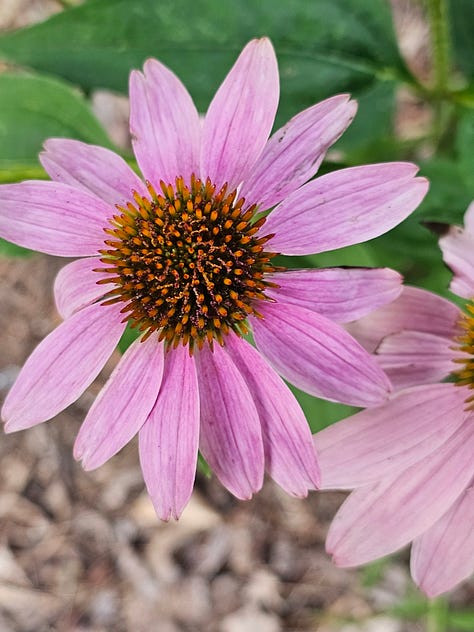
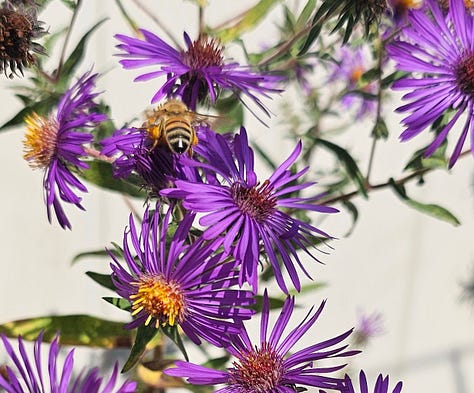
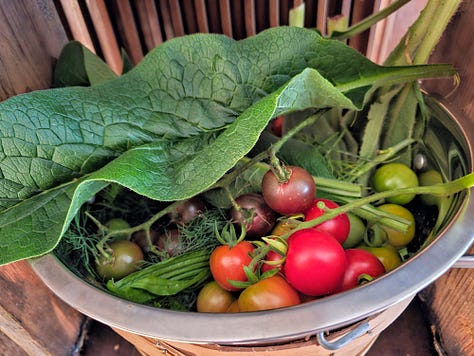
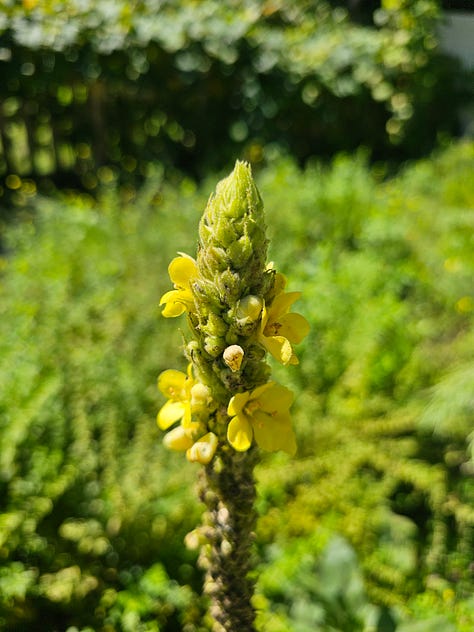

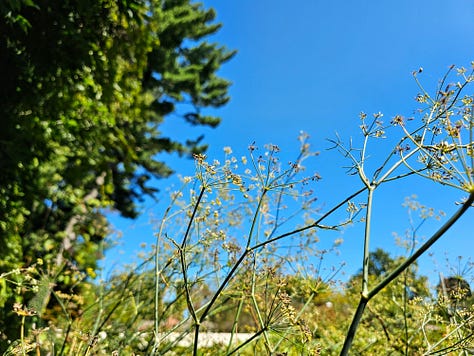


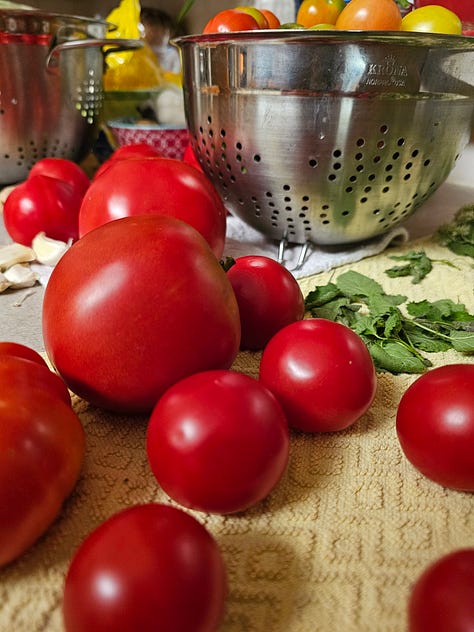
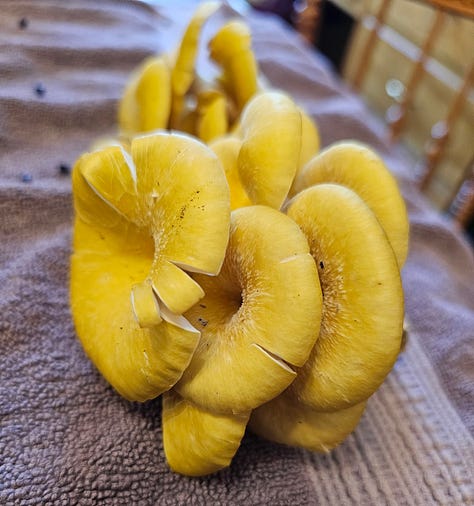
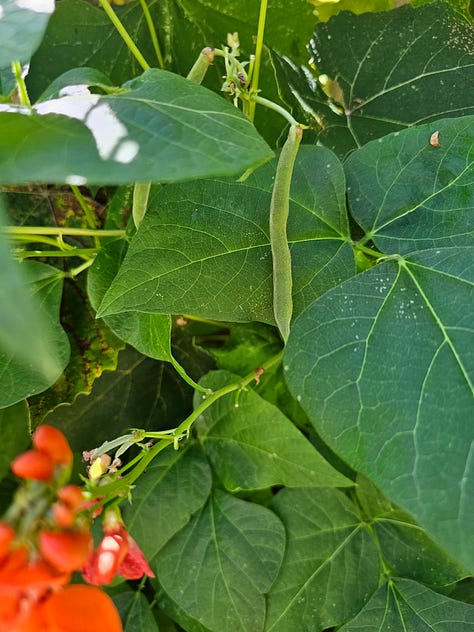
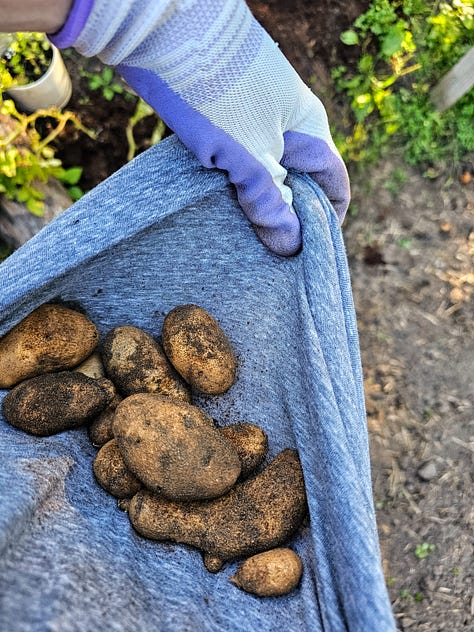
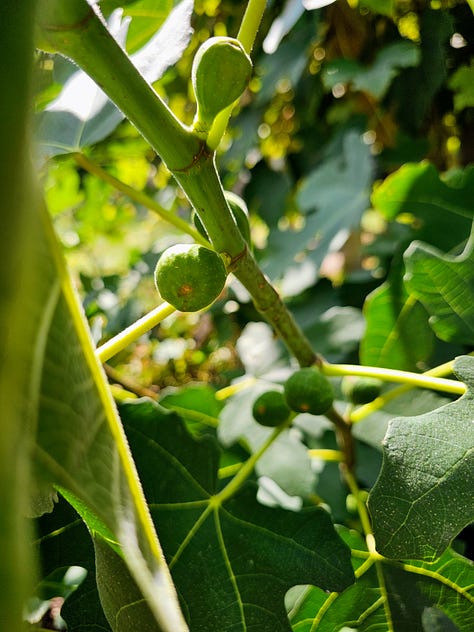
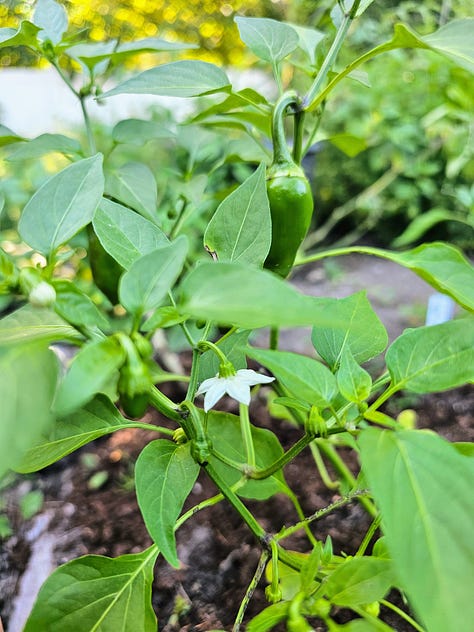

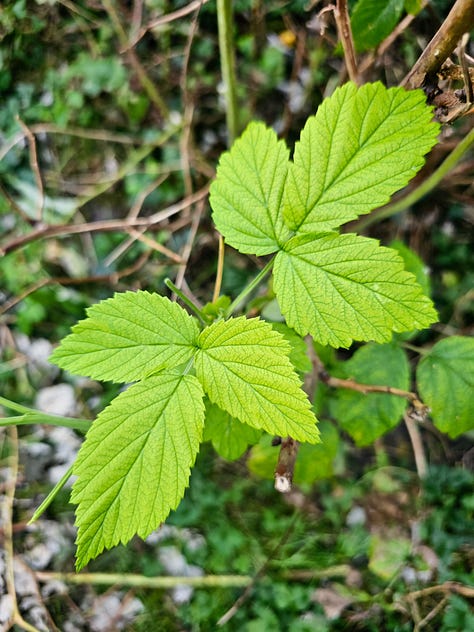
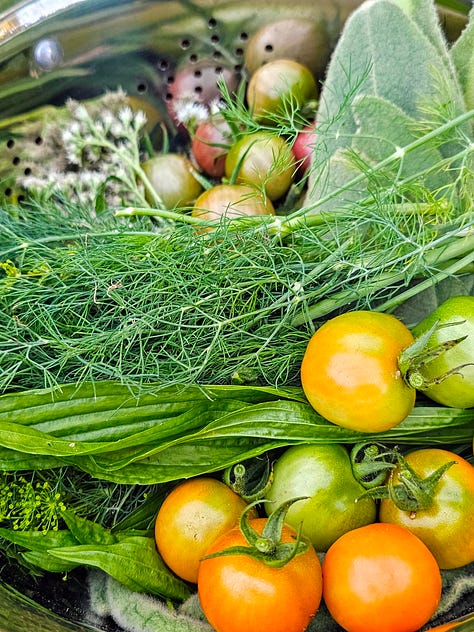
The last of the monarch butterflies flew south, but we get to see who they left behind:
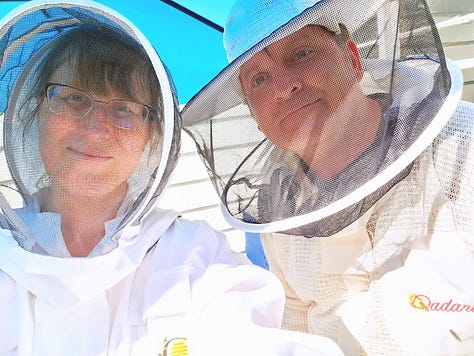
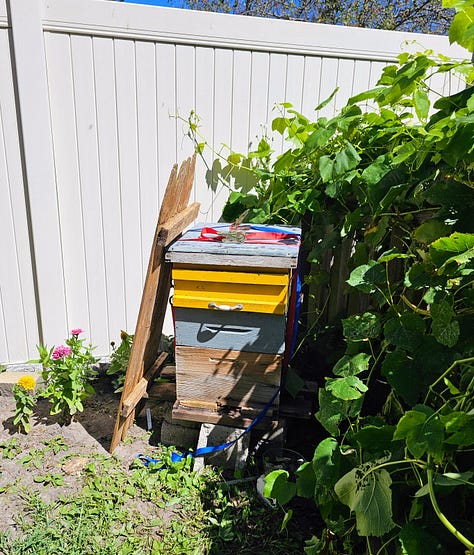

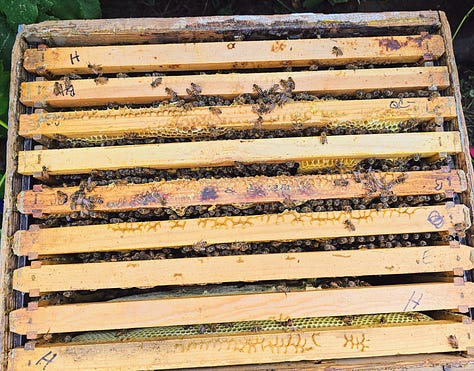


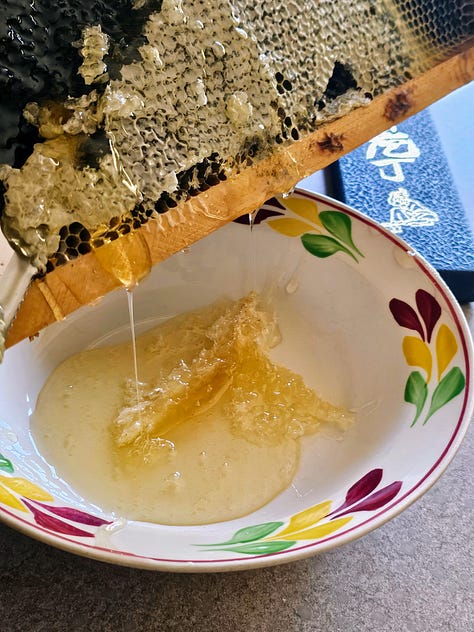


The bees have been busy this month. We ordered 2 new mated queens through the mail (yes, it’s a thing; they arrive with 2-3 attendants in a little cage blocked with fondant which her new subjects have to chew through to release her), only to find that one of the hives we thought was queen-less had just been hiding their queen (Her original Majesty from May). Rather than resort to regicide, we set up Her mail-order Majesty in her own hive, with bees and comb taken from a larger colony who could spare them. So there are now 2 hives in the fenced apiary and 3 in the main garden.
made a few top feeders for the hive boxes, so the bees can drink a 2:1 mixture of sugar water from a mason jar suspended over their frames. Even though it’s been unusually hot here for most of September, mid- to high 80’s Fahrenheit, it’s also been unseasonably dry; so there’s a dearth of flowers and nectar for bees to forage. Other than bright orange pollen from goldenrod, there hasn’t been much coming in to the hives, hence the need to supplement their food supply.The Suburb Farm has almost 300 subscribers now! Thank you many times over to all of you for reading and engaging with this little Substack newsletter. Most of you probably haven’t read this post from 2022, so if you’d like to nerd out on calendar history and the shortest September on record, here it is:
How is your September? What are your plants doing? Are you ready for the season to change? What blooms do you leave for pollinators once summer is over?
—Erin, in Michigan
Winters in the World: A Journey Through the Anglo-Saxon Year, Eleanor Parker (2022). Available at our Bookshop affiliate link here.
2024 Edition of The Almanac available at our link here, as well as the 2025 Edition here. If you make any Bookshop purchase through us, we earn a small commission at no additional cost to you. 😎







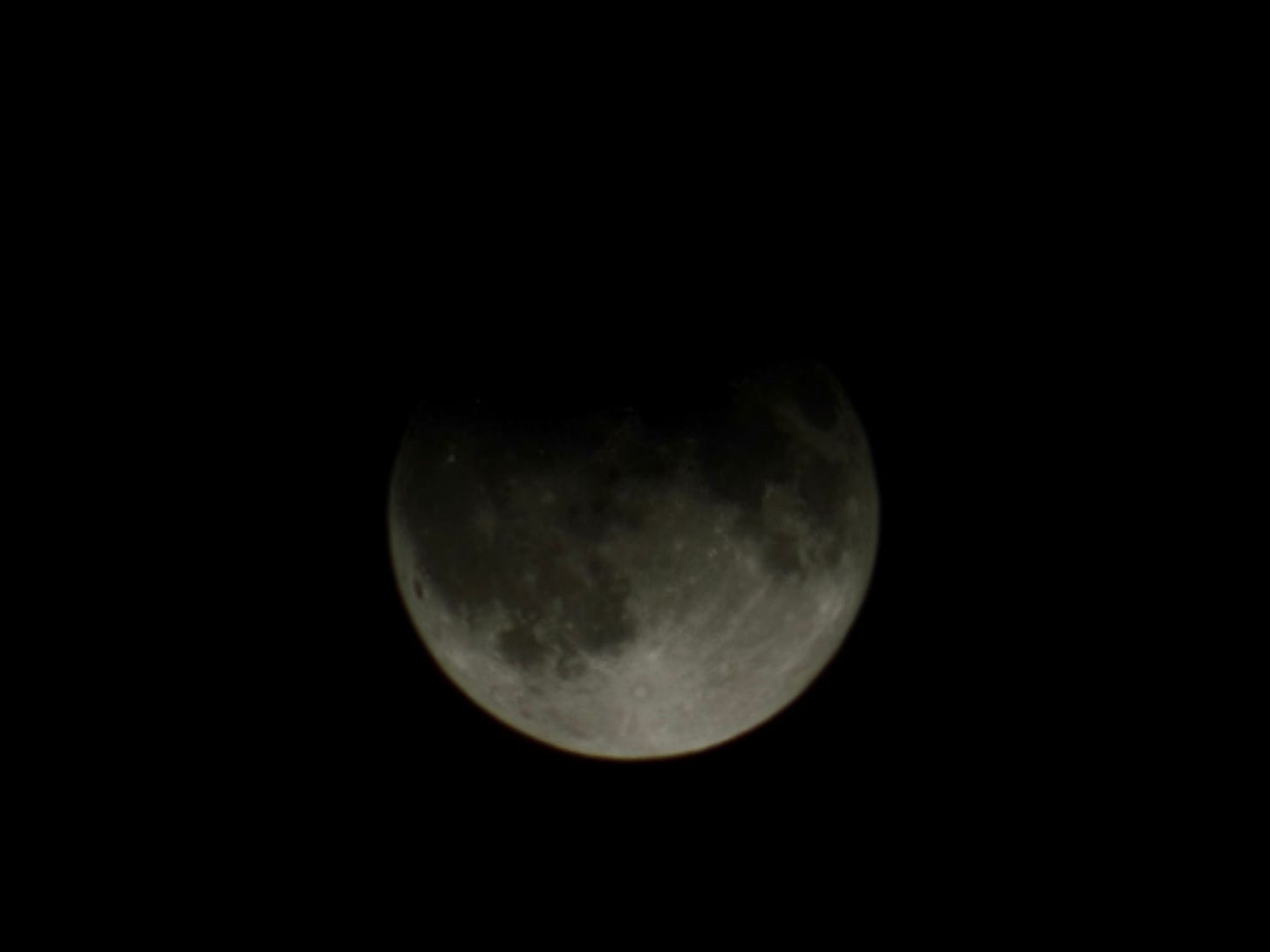

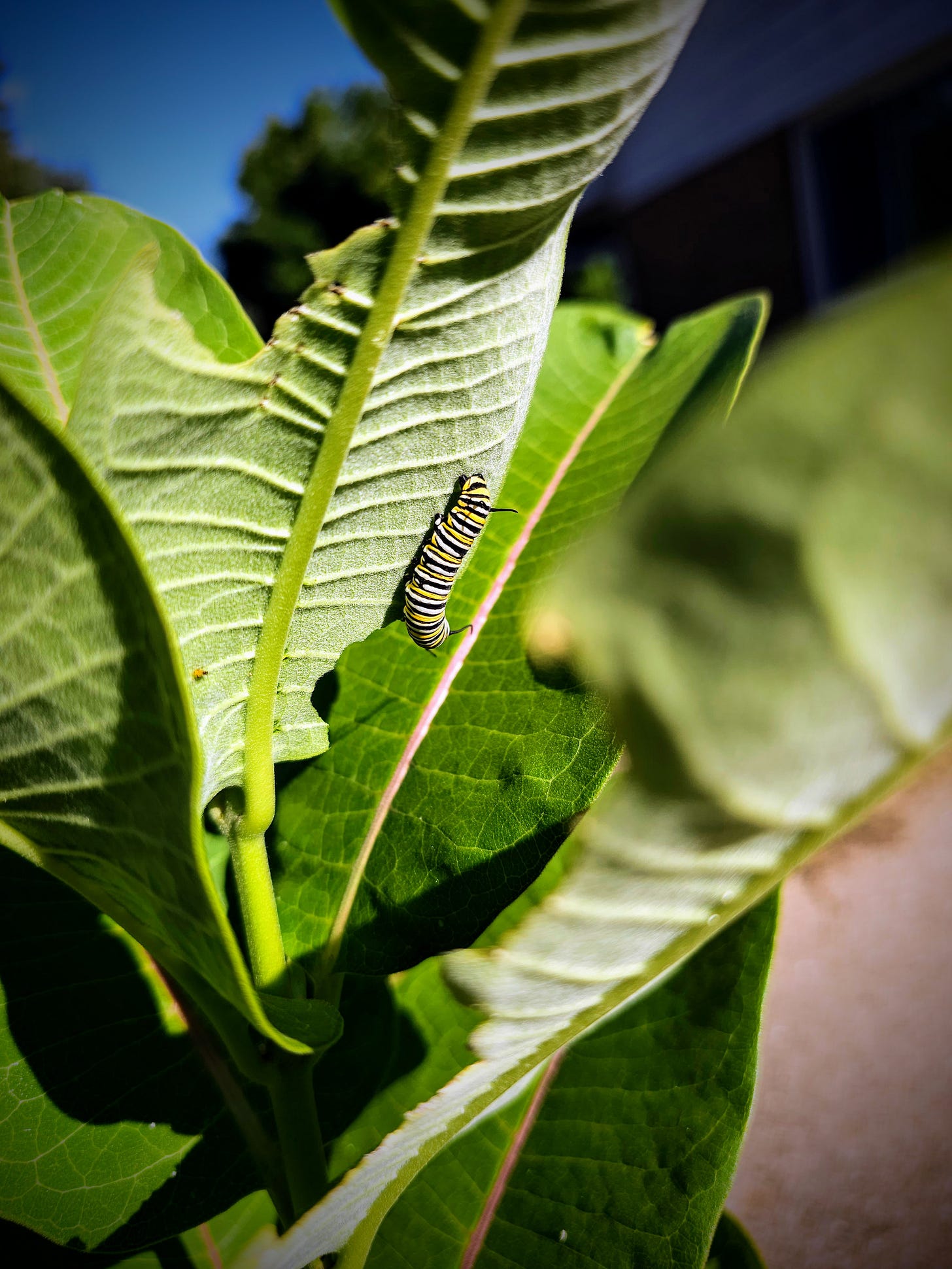


I thought this would be the week for me to begin my Autumn sowing as the temps dipped down to the 90s for several days, but we'll be going back up into the hundreds, so I'm still holding off.
I love seeing all that you've accomplished! And you're expanding your bee colonies, which is amazing 👏 👏👏
Your photos are a feast! Such bright colours and tempting textures! I am gobbling up the sunshine vicariously as we have slipped into greyness. Your garden is giving me inspiration for a micro version next year...!Thanks for sharing the all the yumminess!